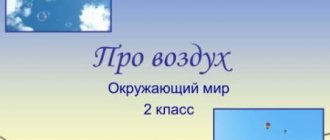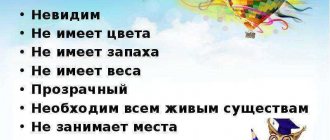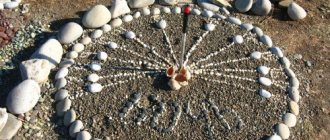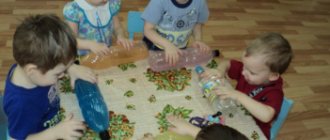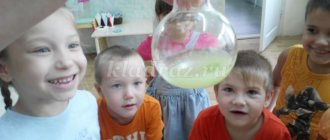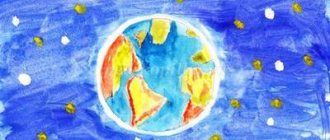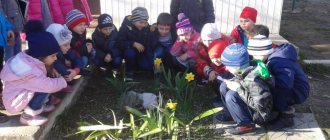Paper – hot and cold
Benjamin Franklin is one of America's greatest men. He was a philosopher, politician and scientist.
You may say to yourself, “Yes, he flew kites during thunderstorms and discovered that lightning is electricity.” But this is just one of his many experiments. Benjamin Franklin was an experimenter—or explorer—whichever you prefer. Science was his hobby, and he researched and wrote about many things throughout his life.
In 1761, Franklin conducted research involving pieces of cloth, snow and the sun. You can repeat it if you live in places where it snows. You will need a sheet of black and white paper.
Experiment with paper on snow
Franklin's experiment consisted of simply placing pieces of cloth on the snow and leaving them for a day. You can do the same thing using your own pieces of paper instead of fabric - they will work the same way. If it's a windy day, put a pebble or some other weight on each of them so that they don't fly away. Their weight should be the same so that both sheets are in the same conditions. You need to start your research in the morning and finish it late in the evening.
When Franklin returned to his experimental rags, he discovered an interesting fact: the white fabric was still at the top of the snowdrift, while the black one was sank into it.
Why did this happen?
Surprisingly, in this case the magic word will not be paper, not fabric, not snow, not black, not white, and not even the sun; The magic word here is warmth. The heat, of course, comes from the sun. When this heat reaches the surface of the earth, one of two things happens: it is either reflected or absorbed by the object it hits. Why doesn't snow melt when sunlight hits it? Is heat absorbed or reflected as it falls on white snow?
White or lightly colored objects act like a mirror on heat and may not absorb much heat from the sun. And the opposite is true in the case of black or dark objects. They absorb heat from the sun and become warmer. Here's what Franklin proved in 1761, and what you can prove for yourself.
If you're smart, you'll dress in light clothes on hot days and dark clothes in cold winters. Your clothing, like paper, will either absorb or reflect heat depending on what color it is.
Spaceships are usually white or at least light-colored. Do you now think that this was done just for beauty? Previously, rockets had black and white stripes. Can you guess how this helped maintain a constant temperature inside, even when they were high above the ground, where sunlight carries much more heat?
As is easy to see, all these examples and any others that you come up with yourself are subject to one law, which is very important for each of us. This is further proof that people who claim to have no interest in science are actually subject to its laws every day of their lives.
Let's say you live where it doesn't snow, or maybe you're just reading this book in the summer. Is it possible to conduct such an experiment in this case? No winter is needed for this study! After all, the law applies at any time of the year. All you need is paper and some kind of temperature “indicator”. An ice cube works great for this!
Place both sheets of paper on a flat surface of the ground so that the sun's rays fall on them. It is necessary that in this place the sun shines on them for at least another half hour. Place an ice cube in the middle of each sheet. The cubes can be lined with pebbles if they slip off.
Watch them melt. It does not take a lot of time. Which cube will melt first? If the one that was lying on black paper, then again, as a result of an experiment with paper proved that dark colors absorb heat and heat up faster than light ones.
Paper experiment - paper pot
Suppose you are lost in the forest and you don’t have a pot or saucepan with you, and in order to cook dinner you need to boil water. How to do this? You will probably be surprised when I suggest you make a paper pot. You will probably say: “Where can I get paper in the forest?” This is easy if you remember that paper is made from plant fibers, which are abundant in the forest. You can use some "nature paper" like what the Indians used. Birch bark or the thin bark of many other trees will work just fine.
Now that you have the paper, all you need to do is fold it into an open top box shape, pour water into it and hold it over the fire until the water boils.
But wait a minute. You can say: “After all, paper or bark will catch fire if I place it near the fire.” Before you worry about this, remember that this is some kind of scientific research, but don't worry because we don't understand how to survive in the forest if you are lost. Therefore, we need to figure out this: why doesn’t the bark catch fire?
Before you look for reasons, you'll probably want to see for yourself that this trick can actually be done. You don't need bark, and you don't have to get lost in the forest. This research will work well with writing paper, a frying pan and a stove. (For safety, firefighters must be present.)
First, fold the paper into a box, folding up 1 cm on each side and securing the corners with paper clips or small pieces of adhesive tape (see illustration).
Fill this box about a third full with water. If it leaks, it's not waterproof paper and you'll need to try a different type of paper (smooth cardstock usually works). Once you have a box that won't leak, fill it with water and place it in the pan. Place the frying pan on the burner of your mother's stove. With her permission, turn on the stove and look at the water.
The old saying goes, "You're looking at a pot that never boils," but that's not true in your experiment. After a few minutes, you will find that the water begins to bubble and boil. When this happens, turn off the burner. As long as there is water in the paper pot, it will not catch fire or char, but a small amount of water will quickly evaporate, and immediately after this the paper will burst into flames.
Why does a paper pot work so well?
Why doesn't it burn?
Why does anything even burn?
For anything to burn, three conditions are necessary.
First, there must be fuel - something that can burn.
Secondly, oxygen or air is needed.
And third, the fuel must reach its combustion temperature, meaning it must be hot enough to combine with the oxygen in the air. If any of these three conditions are not met, there will be no fire. Now let's take a look at the paper pot.
We have fuel for the fire. The fuel here is the paper itself. We also have oxygen. Oxygen is contained in the air everywhere around the pot. We seem to reach the right temperature because the paper is on a hot stove or fire, but there is one reason why it does not light up.
If the paper receives enough heat, it will reach its burning temperature and ignite. To boil, the water in the pot must also be very hot. The water requires so much heat to do this that most of the heat from the stove goes straight through the paper and raises the temperature of the water. This means that the water reaches its boiling point, while the paper cannot reach its burning temperature. And without water, the paper will get hotter and hotter and eventually reach the temperature needed to combine with the oxygen in the air. When this happens, flames burst out of the paper.
Why not place a paper pot directly on the stove? Why did you put it in the frying pan? You can place it directly on the stove, but only if you fold it very carefully. Every part of the paper that comes into contact with the burner should be damp. If you fold the paper unevenly so that the corners remain dry, they may reach burning temperature and then quickly flare up and burn.
The frying pan distributes heat evenly across the bottom of the pot. Perhaps you can come up with a better way to fold the pot so that all the paper inside is covered with water. Once you succeed, you can do this experiment without a frying pan.
Now you know the three conditions necessary to obtain fire, you can try to conduct a study that seems somewhat surprising. Paper can be used to start a fire, but it can also help extinguish it. Before you read further, think about how to extinguish a sheet of burning paper with a piece of the same paper.
Cut a 5x5cm square from one corner of a piece of paper. Roll this square into a ball. Light it on fire and quickly drop it into a glass beaker. This is your fire. How would you put it out now?
There are many ways: you can blow it out; you can pour water on it; you can wait until it burns out. However, you can try the most amazing method of all - simply placing the remaining piece of paper on the glass! At first you will probably think that this is a fool's errand, since the flame may catch on it, but if you carefully close the entire top so that there is no gap between the paper and the glass, the flame will begin to diminish and eventually go out completely.
Why does the flame go out instead of burning through the paper at the top? Remember the three conditions necessary for fire: fuel, oxygen and heat. While the glass was open, there was plenty of all this in it, but as soon as you closed it, the access of oxygen was limited. Fire quickly used him, and without him there could be no fire. Likewise, the absence of any other of the necessary conditions causes the fire to go out. Here are three cases where a fire goes out if one of these conditions is not present:
• Burning gas stove. (Close the throttle, which will ensure that there is no fuel.)
• A burning pan of fat on the stove. (Place the lid on it. This will cause no oxygen.)
• Burning building. (Hose it with water. This will lower its temperature.)
Can you think of other types of combustion and a way to put out the fire? For each of the invented examples, try to determine the missing condition that will cause the fire to go out.
Experimenting with paper is interesting.
Studying the paper
| Möbius strip, how to make Experiments with paper Fingerprints on paper How to make invisible ink Paper tricks, mathematical Paper bridge Paper construction activity DIY fish | How to make a paper filter Paper chromatography Absorbent paper Paper with watermarks Types of printing paper What you can’t do with paper Do the impossible with paper |
Summary of experimental activities in the middle group “The Tale of Paper”
The professor brought us an envelope, what does it contain?Look, we have a fairy tale here, shall we listen?
Far away in a paper country they lived - there were Kartonych (a sheet of cardboard),
Leaflet (sheet of paper) and Fetochka (paper napkin).
And they had a dispute: “Who is more necessary and important among them.” They thought for a long time, and then they decided to find out everything on the journey.
And then on their way they met the Kitty. She wanted to play with the snow, but it was very cold. Friends offered their help to the cat.
Educator: Tell the guys: “How can I help the cat?
Experience: The guys try to make a snowball from three types of paper.
Experiment No. 1 » Let's crumple the paper
«
Invite the children to crumple paper, napkin and cardboard.
-Guys, was it easiest for us to crumple paper, napkin or cardboard? Why ?
Conclusion:
Paper snowball is the best. Cardboard is thick and difficult to fold. The napkin is very soft, tears quickly and does not hold its shape.
Experience No. 2 » Wrinkles, tears
«
— What happened to a piece of paper, cardboard, or napkin when we made a “snowball” out of it?
- What were they like before?
Now try to straighten our paper lumps.
— Has our paper become as smooth as it used to be?
You and I learned that paper wrinkles, but... does not straighten, does not smooth out.
I’ll tell you a secret, the paper can also rustle. Try to crumple the piece of paper and repeat after me the magic words: shi-shi-shi-paper rustle!
Listen now - is it rustling?
- Take our lump from a napkin and pull it in different directions.
- What happened?
- Was it difficult for you to tear the napkin?
Repeat with cardboard and paper.
- What did you do with the leaf?
Tell me, what was easier for you to tear cardboard, paper or napkin? Why?
Conclusion:
This means that thin paper breaks easily, it is not durable. Cardboard is durable and hard to tear.
The kitten said thank you. . Leaflet was proud that he helped.
The friends set off further on their journey, and they met a fox. She wants to drink from the stream, but does not know what to pour the water into.
Educator: Tell the guys: “How can I help the fox?
Guys, we can make a cup out of paper or a napkin or cardboard, but we need to find out which of this material can hold water better.
- Guys, what kind of water do we have, tell us about it?
-That’s right guys, the water is wet and that’s why you and I will now conduct an experiment and find out what kind of paper you have
It won't get wet for a long time.
Experiment No. 3 “Wet the paper”
Invite the children to wet the paper, napkin and cardboard.
Conclusion:
: A cardboard cup is the most convenient, thick, and does not let water through quickly. A glass made from a napkin and paper is not suitable, it gets wet quickly and leaks water.
The fox drank some water and said thank you and ran off into the forest. Kartonich is arrogant!
The friends set off further on their journey. They see a butterfly sitting on a stump and crying loudly, and its wings are stained with dirt. And because of this, she cannot take off, and the houses are already waiting for her.
Educator: Tell the guys: “How can you help a butterfly? (wipe the wings).
Experiment No. 3 “Let’s get some water wet”
Invite the children to wipe the stains on the table with paper, cardboard and a napkin.
- Guys, what was the most convenient way for you to wipe off the dirt? Why?
Conclusion
: The napkin is soft, wrinkles easily and wipes and absorbs better. Cardboard is rough and hard to wrinkle. Paper is less rough, but it is also inconvenient to wipe the table surface with.
Fetochka helped the butterfly put its wings in order. The butterfly thanked her and flew home. And Fetochka became proud, she is the most important.
The friends walked and walked through the mountains and forests, but they were never able to find out: “Which of them is the most necessary and important.” They walked, they walked, and met Professor Shar Sharych. He invited them to visit us. So that we help them. Let the children tell them why they are all very necessary and important to us.
